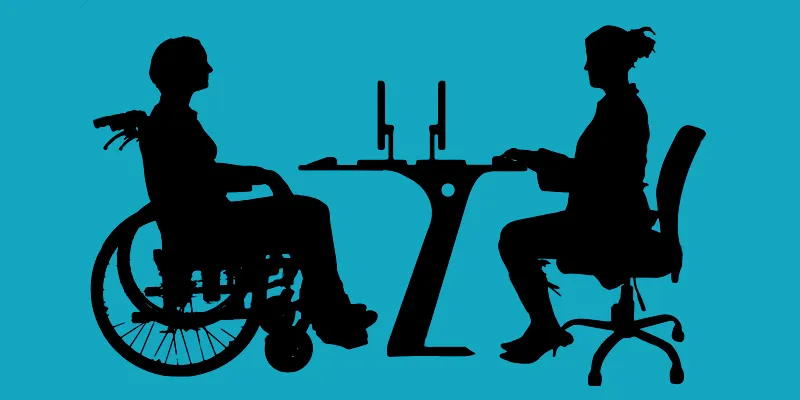Universal work environment for the differently abled
In any organisation, a cohesive and positive work atmosphere is important, and diversity contributes to it. However, a disability-friendly workplace is hard to come by. A staggering two percent of the Indian population is differently abled and this talent pool is often ignored.

Image : shutterstock
Modifying an existing workspace is not as difficult as you may think. In most cases, it’s more a question of re-allocation of existing resources as opposed to investing in new ones. Moreover, the re-allocation processes have proved to be beneficial to all employees and not just the person with disability. For example, an organisation with an employee who had learning and memory challenges, had to write out all tasks specific in a process flow and place them in prominent locations. It was observed that the error rates dropped dramatically for everyone in the organisation. Implementing such processes is good for the company’s growth.
Organisations need to be flexible in regards to physical impairments as well as mental challenges like autism and dyslexia amongst others. It is important to note that the degrees of impairment and assistance required may vary accordingly. For example, the employee may not have total loss of vision or range of movement, but may lie somewhere on the spectrum.
Inclusive processes can be implemented from the recruitment phase itself. Organisations can make changes, like special interview styles, declaring an openness to hiring disabled people and reaching out for skilled workers to an NGO interacting with the disabled. The next step is to bring in better physical infrastructure to aid the differently abled. Few common features can include:
- Ramps with guide rails or holds on both sides not only helps employees with mobility problems, but also the visually impaired. It is also excellent customer service for the elderly.
- Height adjustable desks are especially important for employees using wheelchairs that are usually not adjustable.
- Shelters at pick up and drop point, as well as midway resting points in case of a long walkways.
- Special softwares like screen readers or speech-to-text.
- Push down style door handles rather than a circular knob makes it easier to open the door using any part of the body.
- Easy to use and light stationary / cutlery would help people with muscular degenerative issues. Keep stationary that are neutral instead of right handed/left handed. For example, binders that open centrally.
It’s important to sensitise co-workers to integrate. Also, education towards the disorder plays a large role. It helps ask the person with disabilities what assistance they need instead of presuming.
It may not be wise not to undermine the differently abled. There are spectacular cases of achievement. Integrating people with disabilities in the organisation is easy when the focus is on ability management rather than only on being disability friendly. Organisations need to build on the strengths of the employee and ensure proper skills fit for the job to ensure efficiency.
Although there is three percent government reservation for disabled people, only 10 of the Nifty companies employ 90 percent of the disabled workforce. Even public sector companies are unable to fulfill this mandate. Such affirmative action can be seen across the world. For example, the USA provides tax benefits for companies with disabled people in their employee roster. Government regulations and public sensitivity are only part of the reasons to hire persons with disability. Skill development workshops and medical advances are placing a larger number of people in the hiring pool, which helps in meeting the skills gap faced by the market.







